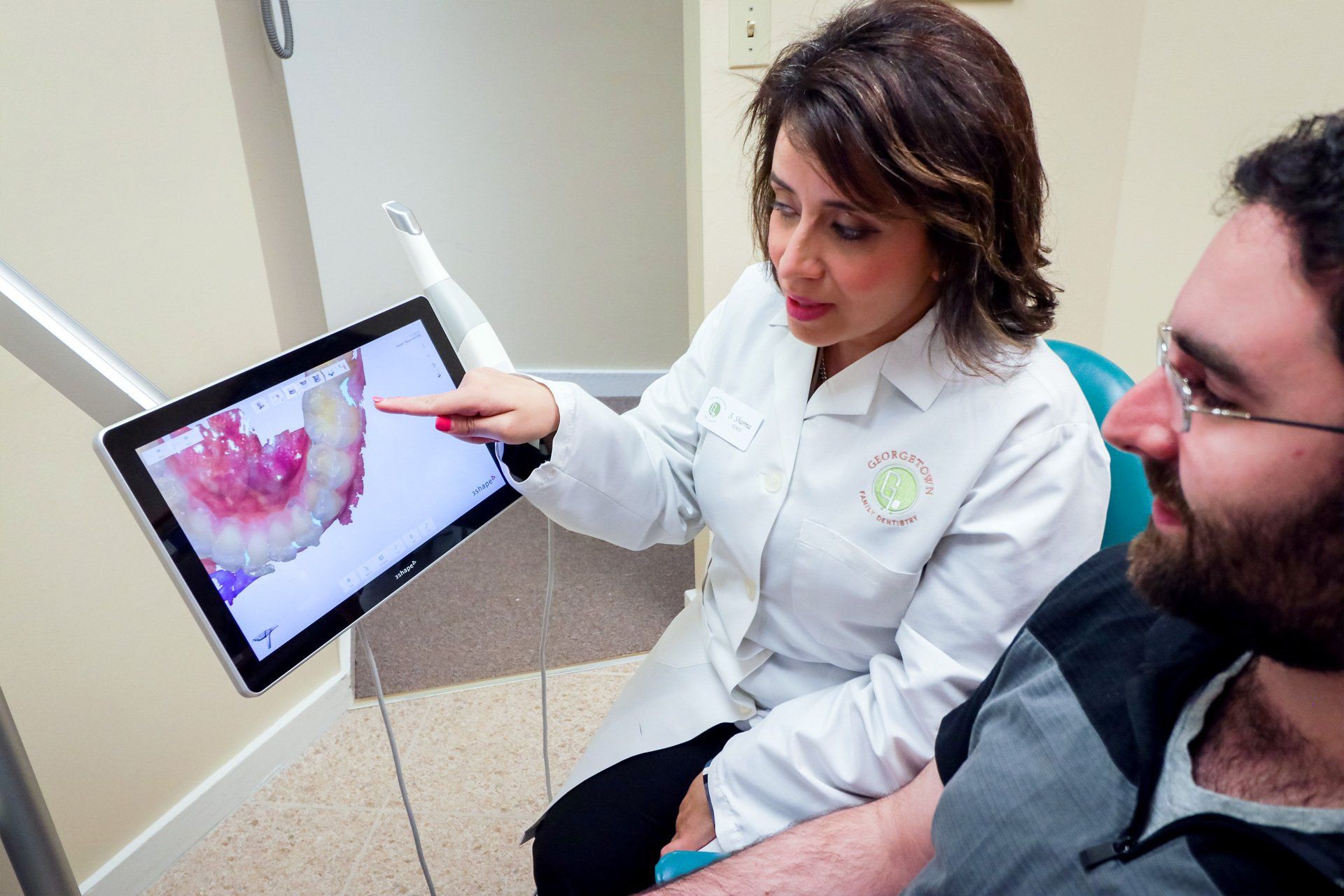Discovering the Perfect Path to a Perfect Smile:
Invisalign® vs. Traditional Braces
Embarking on the journey to straighten your or your child's teeth can be quite daunting. With orthodontic treatment being a significant investment that lasts for months or even years, making the right decision for you or your child is crucial to ensure a smooth and successful experience.
One fundamental choice you'll face is whether to opt for traditional braces or Invisalign aligners. Each method has its pros and cons, and it's essential to carefully weigh these factors to determine which option is best suited for you.

Invisalign vs. Braces: What Sets Them Apart?
Traditional Metal Braces: These braces consist of metal brackets that are bonded to your teeth with a specialized dental adhesive. The brackets secure a wire, which is held in place with rubber bands.
Invisalign: For those undergoing Invisalign treatment, your dentist will provide a series of virtually invisible aligner trays made from BPA-free clear plastic. By utilizing X-rays and impressions to create a 3-D image of your teeth, your dentist will develop a custom treatment plan to gradually shift your smile into perfect alignment.
Weighing the Pros and Cons: Metal Braces and Invisalign
Traditional Braces
Pros:
✅Less self-discipline is required, as they cannot be removed - this makes traditional braces a popular choice for children.
Cons:
❌Dietary restrictions are necessary to avoid damaging braces or trapping food.
❌Braces can make brushing and flossing challenging, unlike Invisalign trays, which can be removed for cleaning.
❌Braces may pose a risk during certain activities, such as rough contact sports.
❌Occasionally, brackets, bands, or metal wires can irritate sensitive gum tissue and cause discomfort.
❌Depending on your case, traditional braces can be more expensive, costing up to $5,500.
❌Braces treatment times tend to be longer than Invisalign, averaging 2 years.
❌Braces treatment times tend to be longer than Invisalign, averaging 2 years.
❌Orthodontic visits are required every 3-6 weeks for adjustments.
Invisalign
Pros:
✅Aligner trays are virtually invisible, offering a discreet orthodontic treatment option.
✅Trays are removable, simplifying oral hygiene routines.
✅No wires, brackets, or bands mean less discomfort.
✅Invisalign treatments can be shorter, usually ranging from 6-18 months.
✅After the initial stages, dental appointments are needed only every 2-3 months.
✅Invisalign minimizes or avoids many traditional braces' side effects.
✅Cost for full Invisalign ($4,725) is generally more affordable, but prices can vary depending on the dental provider.
Cons:
❌Invisalign may not be suitable for children or those who lack the discipline to consistently wear the trays.
❌Invisalign's effectiveness depends on the wearer's compliance, but skilled dentists can guide patients through the treatment successfully.
Is Invisalign the Right Choice for You?
While the pros and cons can help you decide which treatment is ideal for you, only a dental professional can provide a definitive answer. If you believe you may be a good candidate for Invisalign, contact our office to schedule a consultation with Dr. Sharma.
During your consultation, Dr. Sharma will discuss your orthodontic treatment options and use her professional expertise to determine whether Invisalign is the most suitable choice for you.
To schedule your appointment, contact our office online or call
(978) 352-8400.


An All-Inclusive Package with No Hidden Fees
Our Invisalign services offer an all-inclusive price of $5,198 with no hidden fees. The package includes the following:
- Initial consultation
- All dental visits
- Complete Invisalign treatment
- X-rays
- Photos
- Scanning/impressions
- Any necessary corrections
- A complimentary set of retainers
If you're interested in Invisalign, click here for more information about our comprehensive
Invisalign program.
In Conclusion: Weighing Your Orthodontic Treatment Options
When comparing Invisalign clear aligners to traditional braces or other orthodontic treatments like lingual and ceramic braces, it's crucial to consider factors such as braces cost, dental insurance coverage, and the duration of the treatment. Assessing the impact of wearing braces or Invisalign on your daily life, including activities and diet, is also important.
Invisalign vs. braces is a decision that ultimately depends on your unique needs and preferences. Both Invisalign and traditional metal braces offer effective solutions for straightening teeth and aligning your smile. However, they differ in terms of aesthetics, comfort, and flexibility.
Invisalign treatments offer a virtually invisible and more comfortable alternative to traditional braces, with shorter treatment times and fewer dental appointments. On the other hand, traditional braces can be a better choice for children or individuals who may struggle with consistently wearing Invisalign aligners.
By carefully evaluating the pros and cons of each orthodontic treatment option and consulting with a dental professional like Dr. Sharma, you'll be well-equipped to make an informed decision and embark on the path to a stunning and confident smile.

